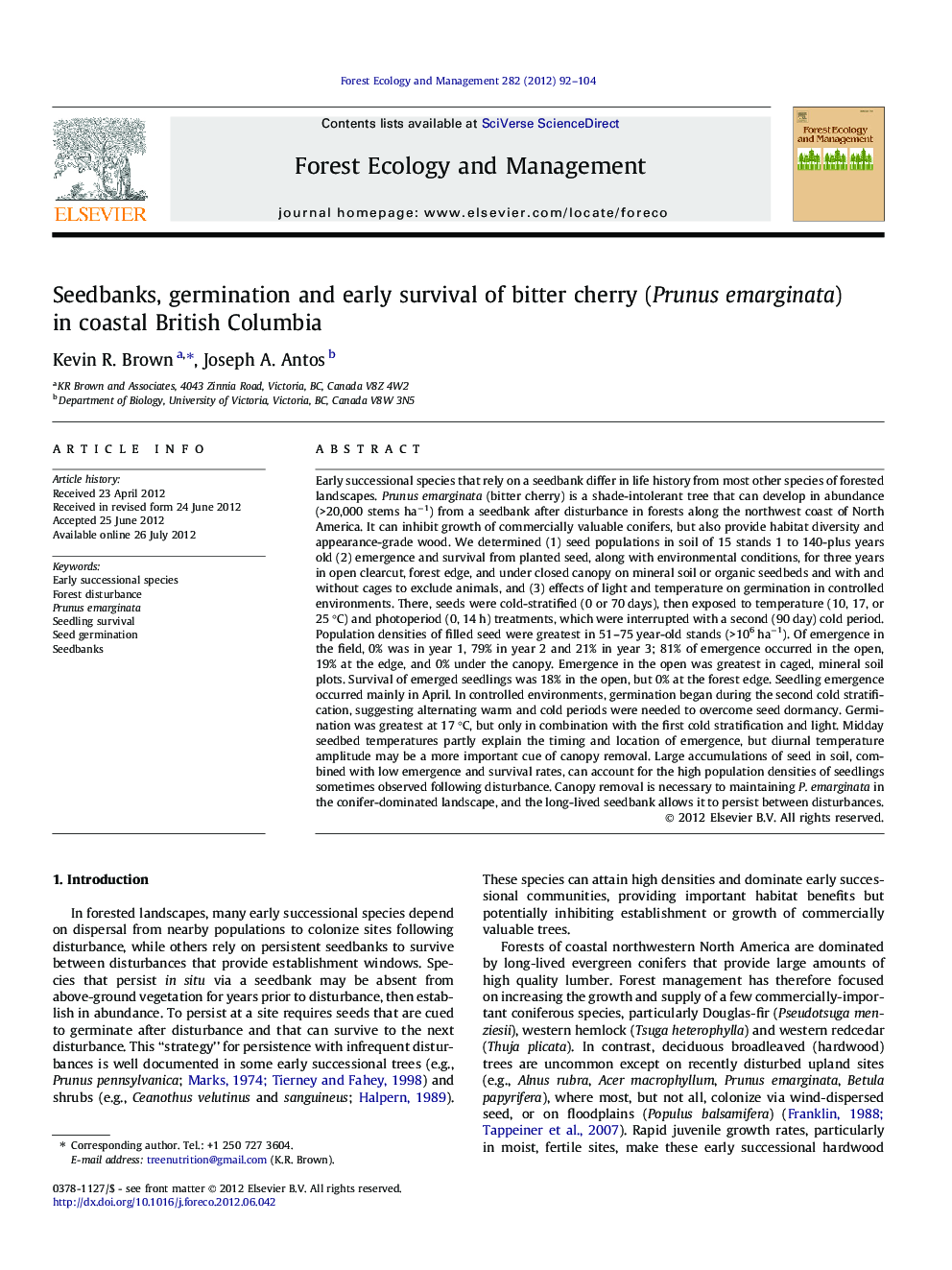| کد مقاله | کد نشریه | سال انتشار | مقاله انگلیسی | نسخه تمام متن |
|---|---|---|---|---|
| 87423 | 159250 | 2012 | 13 صفحه PDF | دانلود رایگان |

Early successional species that rely on a seedbank differ in life history from most other species of forested landscapes. Prunus emarginata (bitter cherry) is a shade-intolerant tree that can develop in abundance (>20,000 stems ha−1) from a seedbank after disturbance in forests along the northwest coast of North America. It can inhibit growth of commercially valuable conifers, but also provide habitat diversity and appearance-grade wood. We determined (1) seed populations in soil of 15 stands 1 to 140-plus years old (2) emergence and survival from planted seed, along with environmental conditions, for three years in open clearcut, forest edge, and under closed canopy on mineral soil or organic seedbeds and with and without cages to exclude animals, and (3) effects of light and temperature on germination in controlled environments. There, seeds were cold-stratified (0 or 70 days), then exposed to temperature (10, 17, or 25 °C) and photoperiod (0, 14 h) treatments, which were interrupted with a second (90 day) cold period. Population densities of filled seed were greatest in 51–75 year-old stands (>106 ha−1). Of emergence in the field, 0% was in year 1, 79% in year 2 and 21% in year 3; 81% of emergence occurred in the open, 19% at the edge, and 0% under the canopy. Emergence in the open was greatest in caged, mineral soil plots. Survival of emerged seedlings was 18% in the open, but 0% at the forest edge. Seedling emergence occurred mainly in April. In controlled environments, germination began during the second cold stratification, suggesting alternating warm and cold periods were needed to overcome seed dormancy. Germination was greatest at 17 °C, but only in combination with the first cold stratification and light. Midday seedbed temperatures partly explain the timing and location of emergence, but diurnal temperature amplitude may be a more important cue of canopy removal. Large accumulations of seed in soil, combined with low emergence and survival rates, can account for the high population densities of seedlings sometimes observed following disturbance. Canopy removal is necessary to maintaining P. emarginata in the conifer-dominated landscape, and the long-lived seedbank allows it to persist between disturbances.
► Populations of filled seed in soil were greatest in 51–75 year old stands.
► Emergence from planted seeds occurred in early spring 15 months after planting.
► 81% of emergence was in the open and 0% under a closed canopy.
► Midday temperature and temperature amplitude may affect emergence.
► Bitter cherry abundance depends on a soil seedbank and timely disturbance.
Journal: Forest Ecology and Management - Volume 282, 15 October 2012, Pages 92–104